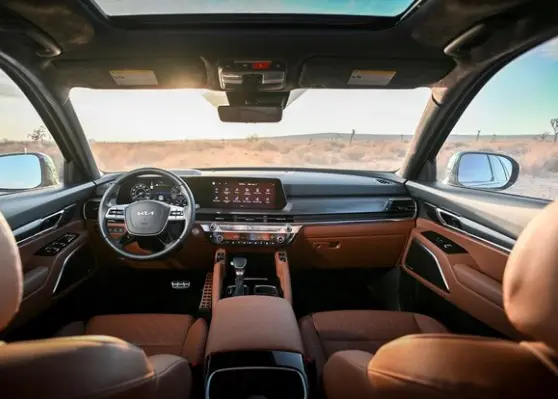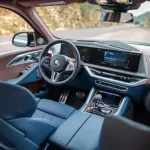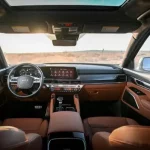In the world of car interior design, two contrasting trends have been gaining prominence in recent years: minimalism and maximalism. These design philosophies represent different approaches to crafting the perfect automotive interior, each with its own unique characteristics and appeal.
In this article, we’ll explore the differences between minimalism and maximalism in car interiors and the factors that influence these design choices.
Minimalism: Less is More
Minimalism is a design philosophy that champions simplicity, clean lines, and a “less is more” approach. In car interiors, minimalism manifests as uncluttered spaces, subdued color palettes, and a focus on essential features. Here’s how minimalism is making its mark:
**1. Clean and Simple Lines:**
Minimalist car interiors are characterized by clean and simple lines. Unnecessary ornamentation is avoided, resulting in a streamlined and elegant look. Dashboards and controls are often designed to be visually unobtrusive, creating a sense of openness and spaciousness.
**2. Subdued Color Palettes:**
Minimalist interiors tend to favor neutral color palettes, such as whites, grays, and blacks, with occasional accents of muted colors like earthy tones or soft blues. These color choices contribute to a serene and calming atmosphere within the cabin.
**3. Functional Design:**
Functionality is a top priority in minimalist car interiors. Every element and feature serves a clear and practical purpose. Controls are intuitive and easy to access, ensuring a user-friendly experience for drivers and passengers.
**4. Reduced Clutter:**
Minimalist interiors are free from clutter. Excessive buttons, knobs, and switches are replaced with touchscreen interfaces and digital controls. This reduction in physical clutter enhances the sense of order and simplicity.
**5. Quality Over Quantity:**
In minimalist design, quality takes precedence over quantity. Premium materials like leather, wood, and metal are often used to convey a sense of luxury and craftsmanship. These materials are chosen for their tactile and visual appeal, rather than excessive embellishments.
**Maximalism: More is More**
Maximalism, on the other hand, embraces extravagance, opulence, and a “more is more” philosophy. Maximalist car interiors are all about making a bold and memorable statement. Here’s how maximalism is leaving its mark:
**1. Bold Colors and Patterns:**
Maximalist interiors are characterized by vibrant colors and intricate patterns. Rich jewel tones, bold reds, and deep blues are common choices. Patterns like florals, geometrics, and animal prints may be incorporated, adding drama and personality to the cabin.
**2. Ornate Details and Accents:**
Maximalist interiors often feature ornate details and accents. These can include intricate stitching, embossed patterns, and decorative trim. Every surface is an opportunity to infuse personality and flair.
**3. Eclectic Mix of Materials:**
In maximalist design, there’s a willingness to mix and match materials and finishes. Leather, suede, velvet, and exotic woods may coexist in the same interior. This eclectic approach creates a visually stimulating and diverse environment.
**4. Abundance of Features:**
Maximalist car interiors tend to be loaded with features and amenities. From advanced entertainment systems to customizable ambient lighting, every conceivable comfort and convenience feature may be included to create an indulgent driving experience.
**5. Artistic Expression:**
Maximalism in car interiors is akin to a work of art. It allows designers to express creativity and individuality, resulting in interiors that are far from ordinary. Elements of surprise and delight are common in maximalist designs.
**Factors Influencing Design Choices**
Several factors influence whether a car interior leans towards minimalism or maximalism:
1. **Brand Identity:** Each automaker has a unique brand identity that may align with one of these design philosophies. Luxury brands often gravitate towards maximalism to emphasize opulence, while some mainstream brands embrace minimalism for its modern and accessible appeal.
2. **Consumer Preferences:** The target audience’s preferences play a significant role. Some buyers seek a luxurious and extravagant driving experience, while others prioritize simplicity and functionality.
3. **Market Trends:** Current market trends and societal influences also impact design choices. For example, the growing interest in sustainability may lead to more minimalist interiors that use eco-friendly materials.
4. **Technological Advances:** Advances in technology, such as touchscreen interfaces and digital controls, enable minimalist designs by reducing the need for physical buttons and switches.
**Conclusion: Striking the Right Balance**
While minimalism and maximalism represent opposing design philosophies, there’s room for both in the automotive world. Some consumers seek the serene elegance of minimalism, while others crave the bold extravagance of maximalism. Ultimately, the choice between the two comes down to personal taste, brand identity, and the specific needs of the target market. In the ever-evolving world of car interior design, striking the right balance between these two design trends remains a captivating challenge for automakers as they cater to the diverse preferences of today’s drivers.


